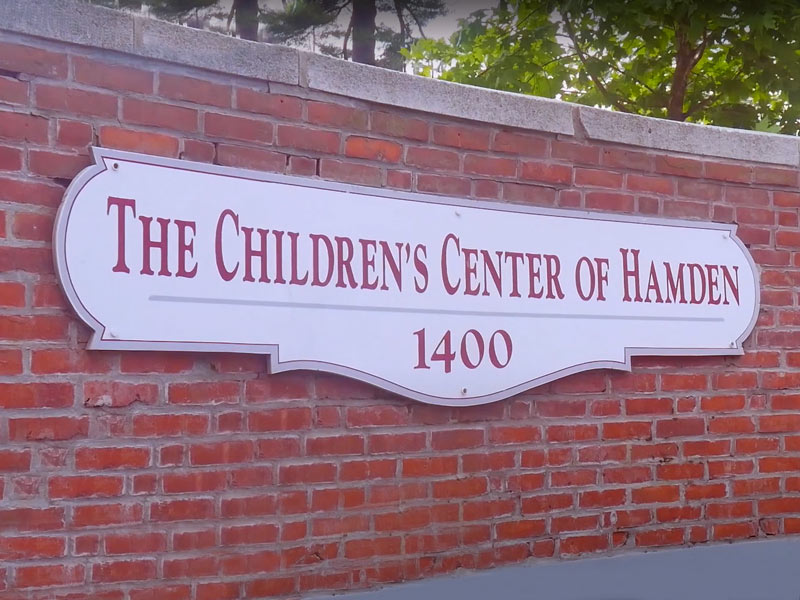Progress Over Perfection:
The Secret to Success at the Children’s Center of Hamden
When it comes to teens navigating the issue of substance use and substance use disorder, The Children’s Center of Hamden in Connecticut knows that prioritizing realistic progress, offering teens alternatives, and providing the support to seek treatment services – on their own terms – makes all the difference.
“I don’t want to die. I don’t want to overdose. Can you help me?”
These are powerful words. Words made even more powerful when spoken by the voice of a gravelly, toneless, slightly hoarse and mostly unintelligible teenager.
This young man, “Chris”, was referred to The Children’s Center of Hamden’s (TCCOH) Recovery Team after participating in outpatient treatment for opioid use just before the COVID-19 outbreak. The Recovery Team worked alongside “Chris” and provided a trusted place for him to turn when he was ready to ask for help. Today, “Chris” is enrolled in an inpatient treatment program and is progressing well.
TCCOH programming gives teens an opportunity to make progress at their own pace by offering mentorship, group meetings and social events in a supportive and welcoming atmosphere that draws them in without judgement or pressure. The focus is on building relationships and earning trust so teens can learn alternatives to substance use and build healthy life-long habits.
Supportive Social Connections
Navigating peer pressure can be difficult at any age, but teens can be particularly susceptible1 – and research shows that social pressures are predictive of risky behaviors, like substance use.2 In Connecticut, young adults have an above average incidence of substance use disorder compared to the U.S. average.3
The Recovery Team offers teens the opportunity to make different choices. By creating authentic, personal connections and fostering trust – which may help to create safe spaces for teens to ask for help, if and when they are ready to do so – the Recovery Team focuses on building relationships and supporting teens in navigating the tough issues they’re faced with day to day.
“It’s teaching kids a better way. We all come here to get better in life, have fun and stay out of trouble,” said one teen. “Hopefully we can recruit more kids to come to TCCOH because it could save someone’s life.”
In addition to the support they receive from the Recovery Team staff, the teens also spend time together, making friends and enjoying healthy activities. The “Peace and Chill Crew” – aptly named by the participants – goes to arcades, plays basketball and sometimes just hangs out in substance-free environments.
“The only thing we ask is that they come sober,” said Deedee Colavolpe, program supervisor with the Recovery Team. “These casual, social activities help to engage teens in a way that speaks to them and many go on to participate in recovery meetings as well.”
Progress over Perfection
In every conversation, meeting or activity, the Recovery Team emphasizes progress, not perfection.
“We are working toward reductions in use, increased engagement in healthy activities and connecting the teens with treatment if and when they seek it out,” said Smith.
The Recovery Team uses the evidence-based Adolescent Community Reinforcement Approach (A-CRA), which stresses the importance of motivational interviews and calls for reinforcing familial, social and educational ties to support recovery. The Recovery Staff meet 1:1 with teens to address a variety of issues, from types of substance use to family situations. They address problem-solving skills, communication skills, and active participation in positive social and extracurricular activities, using behavior change techniques that help teens create lives that are not centered on substance use.4
“They taught me to think before I do,” said another teen. “I learned to just walk away.”
Voices of change
“If we’re able to help even one kid, it’s the greatest feeling,” said Colavolpe.
Yet, they’ve already done so much more.
In its first three years, the Recovery Team at TCCOH has engaged 91 teens and successfully connected 21 of them with treatment. In addition to the dedication of the staff, the program’s success can also be attributed to the teens themselves, who serve as some of the most vocal champions of the Recovery Team’s work.
“Some people might resist it, because some people are stubborn; but if everybody had the same understanding, everybody would be willing to come to the program”
— “Jayden”
“Now I have a voice; I am able to express how I feel,” said “Jayden,” age 16.
Teens who have participated directly in the Recovery Team’s initiatives let others in their schools and communities know about the programs. Many former program participants have since reached out to Colavolpe and her colleagues to share that the program was a turning point in their lives.
“This program is helping kids like me on the street everyday dealing with issues involving drugs, crime, and all that stuff,” said “Laz,” age 16.
1 Peer Pressure. Office of Adolescent Health, U.S. Department of Health and Human Services. Accessed August 24, 2020. Retrieved from: https://www.hhs.gov/ash/oah/adolescent-development/healthy-relationships/healthy-friendships/peer-pressure/index.html
2 Allen, J. P., Porter, M. R., & McFarland, F. C. (2006). Leaders and followers in adolescent close friendships: susceptibility to peer influence as a predictor of risky behavior, friendship instability, and depression. Development and psychopathology, 18(1), 155–172. https://doi.org/10.1017/S0954579406060093
3 Behavioral Health Barometer – Connecticut, Volume 5. Substance Abuse and Mental Health Services Administration. Accessed August 11, 2020. Retrieved from: https://www.samhsa.gov/data/sites/default/files/cbhsq-reports/Connnecticut-BH-BarometerVolume5.pdf
4 Godley, M. D., Passetti, L. L., Subramaniam, G. A., Funk, R. R., Smith, J. E., & Meyers, R. J. (2017). Adolescent Community Reinforcement Approach implementation and treatment outcomes for youth with opioid problem use. Drug and alcohol dependence, 174, 9–16. https://doi.org/10.1016/j.drugalcdep.2016.12.029

